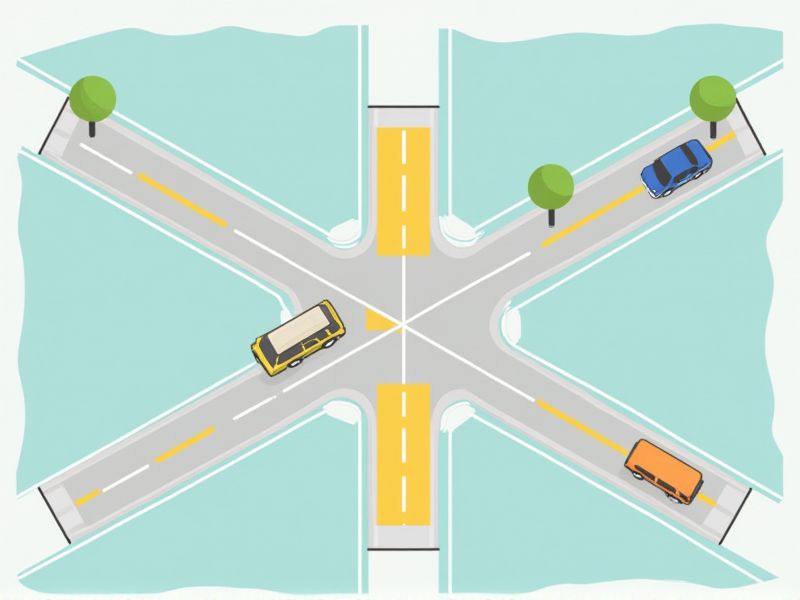
When planning or evaluating bike lanes, understanding standard dimensions is essential for safety and usability. Most urban bike lanes are typically 5 to 6 feet (1.5 to 1.8 meters) wide, which provides enough space for a single cyclist to travel comfortably. On streets with higher speeds or volumes, or where there might be frequent overpassing, a width of 6 feet is recommended for added safety. Ensuring the correct width helps prevent conflicts between cyclists and motorists, making cycling a more accessible and appealing transportation choice.
Width Of Bike Lanes
The standard width for bike lanes typically ranges from 4 to 7 feet, depending on the road conditions and the expected volume of cyclists. Properly designed bike lanes can improve safety, reducing the potential for accidents by creating a dedicated space for cyclists. Studies show that wider bike lanes, especially those exceeding 5 feet, significantly increase rider comfort and encourage more people to cycle. When planning your route, look for bike lanes that meet these width standards to enhance your cycling experience.
Separation From Traffic Lanes
Bike lanes should ideally be separated from traffic lanes to enhance safety and promote cycling. Research indicates that a minimum width of 1.5 meters is recommended for designated bike lanes to accommodate safe passage for cyclists. The installation of physical barriers such as curbs or posts reduces the likelihood of collisions, with studies showing that this can lower injury risk by up to 50%. If you're considering biking in urban areas, look for cities that prioritize this type of infrastructure for a more secure riding experience.
Surface Quality
The surface quality of bike lanes is critical for ensuring a safe and enjoyable riding experience. A well-maintained bike lane typically features a smooth asphalt or concrete surface that minimizes bumps and hazards, ideally measuring a width of at least 1.5 meters to accommodate varying rider skill levels. Regular inspections and maintenance are essential, with a recommended schedule of at least twice a year to address cracks, potholes, and debris. Investing in high-quality materials and construction methods can increase the lifespan of these lanes, ultimately benefiting the local cycling community and promoting healthier transportation options.
Transition Zones
Standard guidelines for bike lanes prioritize the design and functionality of transition zones to ensure safety and efficiency. These areas, typically spanning 30 to 50 feet, serve as critical spaces where cyclists shift from one type of facility to another, such as from a dedicated lane to a shared roadway. Clear lane markings and visual cues are essential, with a recommended width of 1.5 meters for bike lanes to enhance visibility and maneuverability. Implementing these standards effectively can reduce accidents by up to 25%, creating a safer cycling environment for all road users.
Entry And Exit Points
Bike lane standards emphasize the design and functionality of entry and exit points to enhance safety and accessibility. Properly marked entry points can increase visibility and encourage cycling by clearly guiding cyclists where to enter safer roadways. Similarly, well-defined exit points reduce potential conflicts with motor vehicles, facilitating smooth transitions for cyclists. In cities with robust cycling infrastructure, research indicates that properly designed entry and exit points can lead to a 50% decrease in biking accidents.
Intersection Treatments
Bike lanes should prioritize safe and efficient intersection treatments to enhance cyclist safety and promote cycling as a viable transportation option. Research indicates that approximately 50% of bicycle accidents occur at intersections, highlighting the need for effective design. Implementing features such as dedicated bike signals, clear signage, and highly visible crosswalks can significantly reduce the risk of collisions. For your community, adopting these standards will create a more bike-friendly environment, boosting both cyclist confidence and overall traffic safety.
Buffer Zones
The standard of bike lanes places essential emphasis on buffer zones, which serve as protective areas between cyclists and motor vehicle traffic. Ideal buffer zones typically measure at least 2 to 3 feet wide, enhancing safety and comfort for riders. Cities implementing these standards witness up to a 40% decrease in accidents involving cyclists. By prioritizing such design elements, your local planners can significantly improve urban cycling infrastructure and promote sustainable transportation.
Visibility And Signage
Effective bike lane standards emphasize visibility and proper signage to enhance cyclist safety. Research indicates that well-marked bike lanes can reduce accidents by up to 50%, making clear signposting essential. High-contrast colors and reflective materials improve lane visibility during both day and night, significantly benefiting urban cyclists. Ensure that directional and caution signs are strategically placed to inform and guide users, ultimately promoting safer cycling environments.
Markings And Symbols
The standard for bike lanes emphasizes the importance of clear markings and symbols to enhance cyclist safety and navigation. For instance, the use of colored pavement, usually green, indicates dedicated bike lanes, which should be at least 5 feet wide in urban settings. Highway Safety Manual data shows a 30% decrease in cyclist accidents when proper signage, such as bike lane symbols and directional arrows, is implemented. You can significantly improve your riding experience by utilizing routes marked with these standards, ensuring both visibility and clarity.
Drainage Considerations
Effective bike lane design prioritizes drainage considerations to ensure safety and usability. Proper drainage reduces water accumulation, minimizing hazards such as slick surfaces and enabling year-round biking in various weather conditions. The ideal bike lane gradient should typically be between 1% to 5% to facilitate efficient water runoff. Implementing permeable materials can also enhance water absorption, further decreasing the risk of pooling and promoting an environmentally friendly approach to urban transportation.
